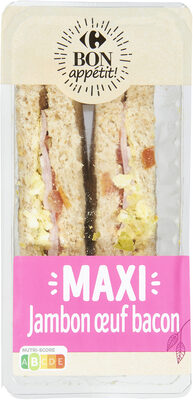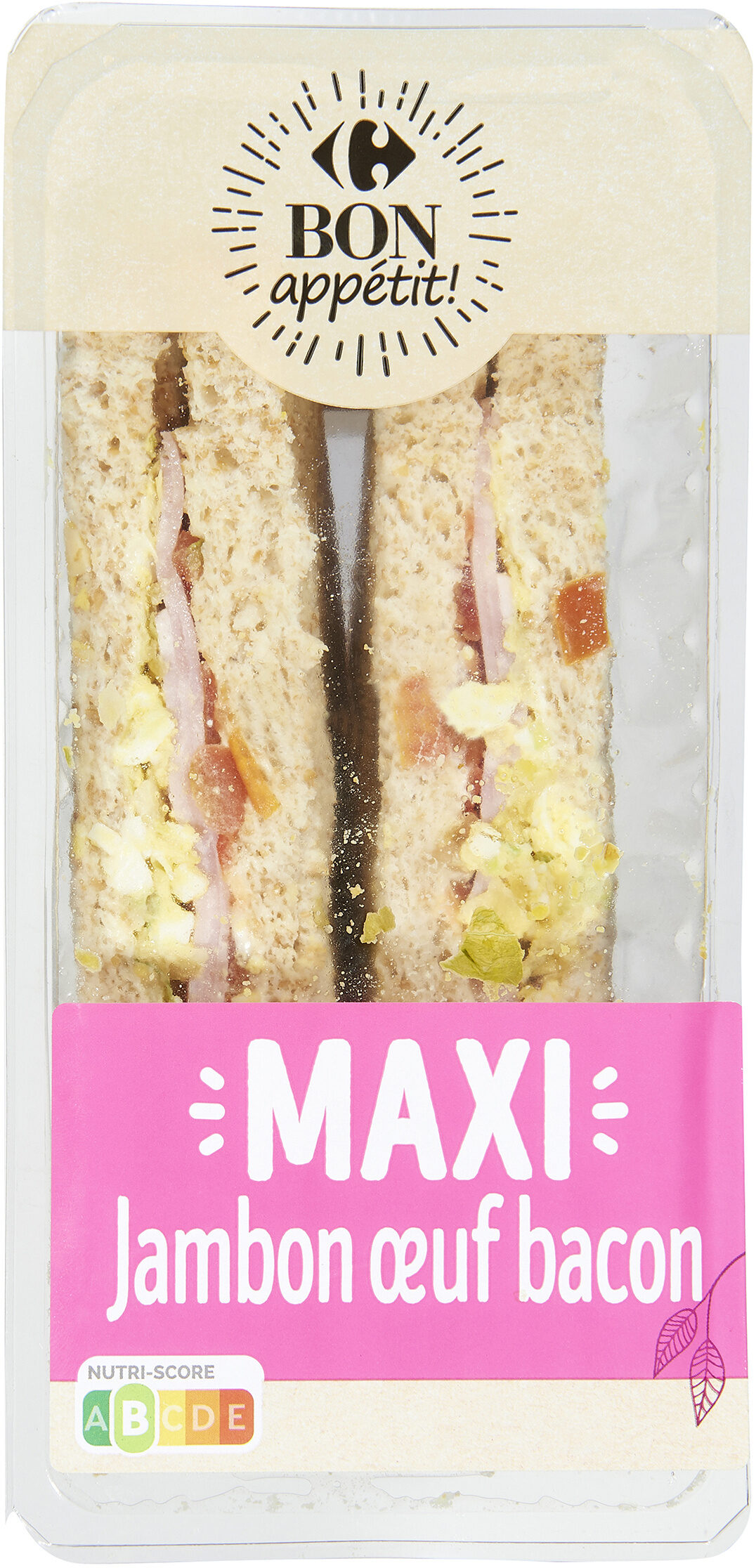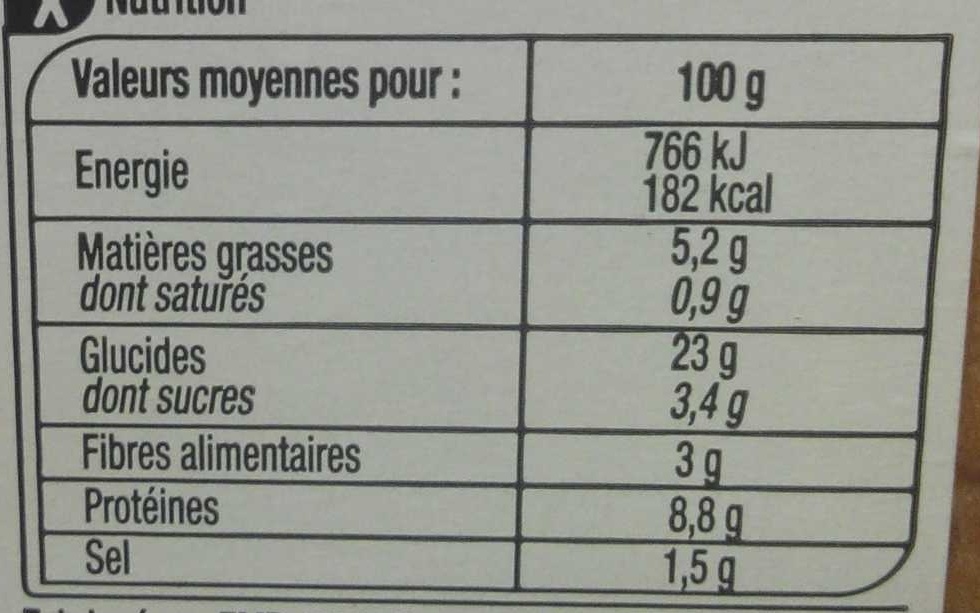MAXI Jambon œuf bacon - Bon App' - 200 g
Important note: this product is no longer sold. The data is kept for reference only. This product does not appear in regular searches and is not taken into account for statistics.
This product page is not complete. You can help to complete it by editing it and adding more data from the photos we have, or by taking more photos using the app for Android or iPhone/iPad. Thank you!
×
Some of the data for this product has been provided directly by the manufacturer Carrefour.
Barcode: 3560070565344 (EAN / EAN-13)
Common name: Sandwich au pain de mie complet garni de crudités (17,5%), de jambon cuit standard, d'œuf dur et de filet de bacon fumé cuit.
Quantity: 200 g
Categories: Sandwiches, Sandwiches filled with cold cuts, Ham sandwiches, Bacon sandwiches, Raw vegetable sandwiches
Manufacturing or processing places: France
Traceability code: EMB 49331H - Segré (Maine-et-Loire, France)
Stores: Carrefour
Countries where sold: France
Matching with your preferences
Environment
Packaging
Transportation
Other information
Conservation conditions: À consommer jusqu'au : voir sur le film supérieur de l'emballage. À conserver entre 0°C et +4°C. Conditionné sous atmosphère protectrice. Ne pas congeler.
Customer service: Interdis - TSA 91431 - 91343 MASSY Cedex - France.
Report a problem
Data sources
Product added on by sebleouf
Last edit of product page on by org-carrefour.
Product page also edited by desan, packbot, segundo, solveig-yuka, tacite, teolemon.










